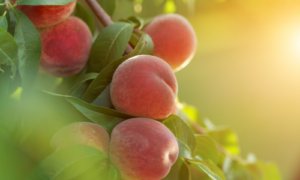Published on March 14th, 2024.
All About Riesling Wine
A Rendezvous with Riesling
Riesling, the chameleon of the wine world, has long been synonymous with sweetness in the minds of many wine enthusiasts, dominating shelves with its sugary allure. But here’s the juicy truth: Riesling is a grape that defies expectations, offering a thrilling spectrum of flavours, from bone-dry to tantalizingly sweet, across vineyards spanning the globe.
While German Rieslings may steal the spotlight, don’t sleep on the dry wonders hailing from Austria, or the hidden gems emerging from Oregon and New York to the far reaches of Australia, New Zealand, and Canada. These wines, both sweet and dry, are the unsung heroes of the wine world, captivating sommeliers and wine aficionados with their sheer brilliance.
But what truly sets Riesling apart is its ability to play matchmaker on the palate, effortlessly enhancing everything from rich, buttery fish dishes to boldly spiced curries. So, whether you’re sipping a crisp, dry Riesling or indulging in a lusciously sweet pour, raise your glass to the grape that keeps us guessing and never fails to delight.
What does Riesling wine taste like?

Peach

Honey

Lemon

Apple

Petrol
In the world of Riesling, flavours abound across the stylistic spectrum. Sweeter versions burst with ripe fruits like peaches and apricots, while drier styles offer a savoury twist with crisp apples and pears. Throughout, expect a refreshing citrus kick alongside a mineral backbone. Spice, honey, and notes of ginger and lemongrass add depth, but it’s the distinctive petrol aroma that truly sets high-quality Riesling apart. It’s a wine of surprises, satisfying both sweet and savoury palates with its versatile charm.
What is the structure of Riesling wine?
In the world of wine, there’s no one-size-fits-all when it comes to structure. However, there are general ranges for body, acidity, alcohol, and tannin that each grape tends to fall within. These guidelines offer a starting point, but factors like growing conditions and winemaking techniques can greatly influence each element. So while they provide helpful insights, the beauty of wine lies in its diversity and the unique expressions it brings to each glass.
LIGHT BODY
Imagine your palate as a liquid scale, ranging from the lightness of water to the richness of heavy cream. Riesling falls on the lighter end of the spectrum, offering a refreshingly delicate body that dances effortlessly across your taste buds. It’s like a crisp, cool breeze on a warm summer day—a sensation that leaves you feeling invigorated and alive with each sip. So, if you’re craving a wine that’s as light and lively as a feather, Riesling is your perfect pour!
HIGH ACIDITY
Acidity in wine can be discerned by how much your mouth waters after a sip. The more you salivate, the higher the acidity. Riesling is known for its vibrant acidity, which leaves your mouth positively watering for another sip. It’s this zesty, refreshing character that makes Riesling a favourite among wine lovers seeking a lively and invigorating experience.
LOW ALCOHOL
The sensation of alcohol “burn” in the back of your throat is a telltale sign of its presence in wine. Riesling, traditionally known for its lower alcohol content, tends to offer a gentler, more subdued sensation. However, in warmer regions where grapes may ripen more fully, Riesling wines can sometimes exhibit slightly higher alcohol levels. Nonetheless, even in these instances, Riesling’s characteristic balance and finesse ensure a smooth and enjoyable drinking experience.
Where is Riesling wine from?
Riesling, famously associated with Germany, thrives in cooler climates where its natural acidity shines. While German Riesling is often associated with sweetness, it offers a spectrum of styles, from subtly sweet Kabinett to lusciously sweet Trockenbeerenauslese.
In Austria, Riesling tends towards a dry profile, aging gracefully for years. Both German and Austrian Rieslings exhibit a distinctive minerality. Additionally, German Sekt, a sparkling wine made from Riesling, presents a niche yet intriguing option for exploration.
Beyond Germany and Austria, Riesling flourishes in Alsace, Australia’s Clare Valley and Eden Valley, as well as in Oregon, Washington State, and New York’s Finger Lakes region. Praised for its transparency, Riesling reflects the terroir of its origin, making it a favourite among growers, winemakers, and consumers alike.
What are the best food pairings for Riesling wine?

SPICY
The sweetness of the wine will help balance out the spiciness, creating a vibrant and refreshing combination, akin to the harmony found in sweet chili sauce. Additionally, the lower alcohol content results in a milder sensation, reducing any potential burning feeling.

FRIED
The elevated acidity in Riesling effortlessly slices through the oiliness of fried foods, offering a refreshing contrast. Additionally, the occasional effervescence character found in Riesling serves to cleanse the palate, especially after indulging in rich dishes, leaving you feeling refreshed.

INDIAN
The robust acidity of Riesling effortlessly slices through the richness of most Indian dishes, while its subtle sweetness helps to balance out the spice. Moreover, Riesling’s delicate nature ensures it won’t overshadow dishes with bold, complex flavours, allowing the nuances of the cuisine to shine through uninterrupted.
Share this article
Click here to receive the latest and greatest promotions, new products, competitions and so much more straight to your inbox.










